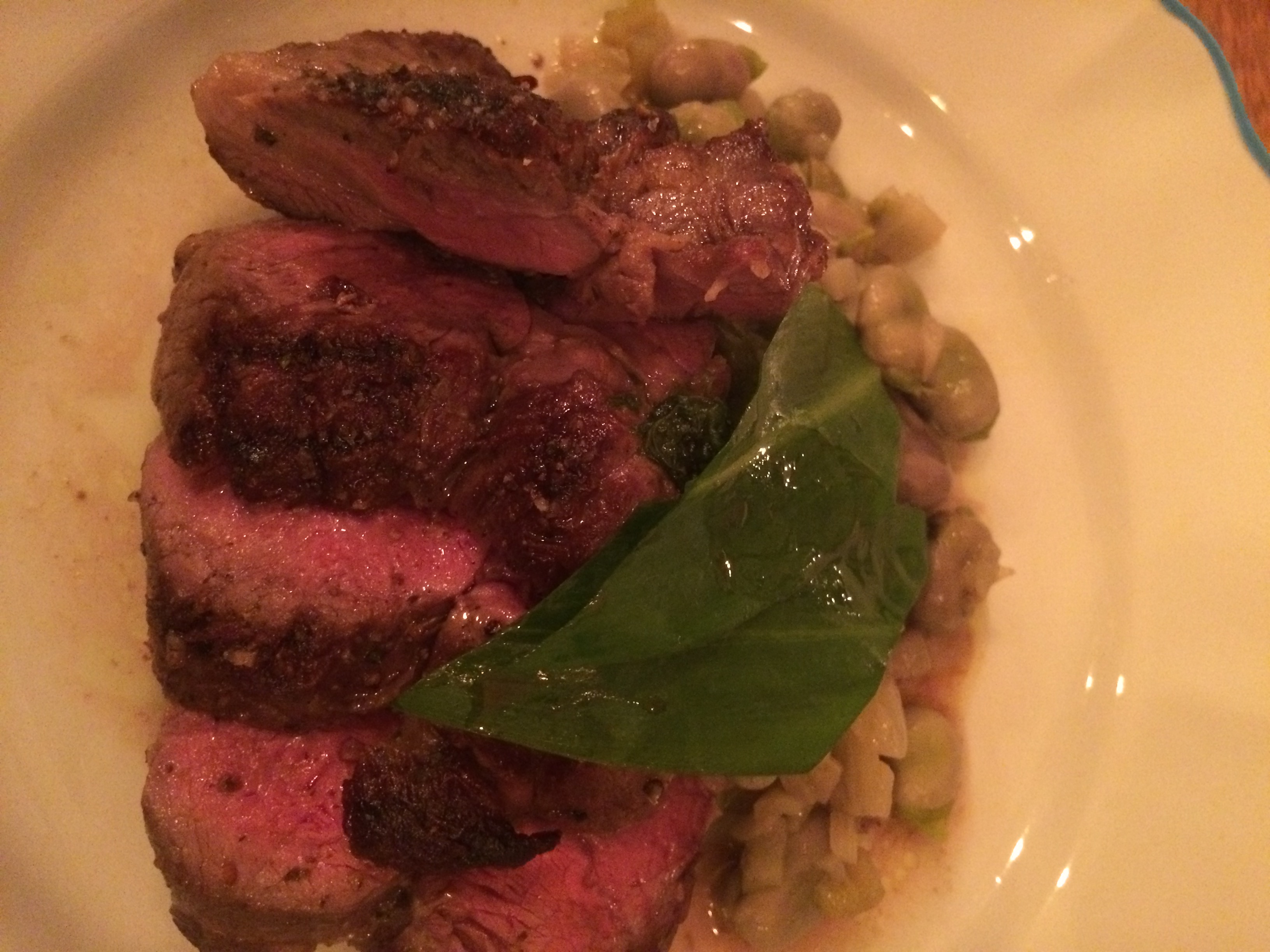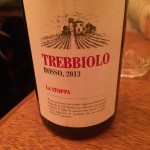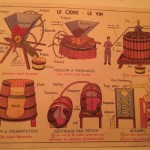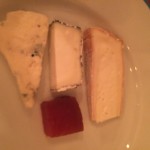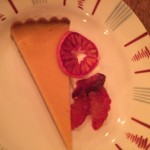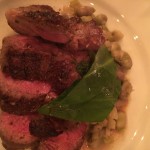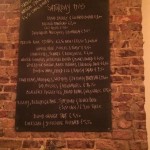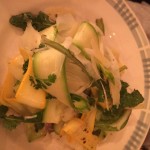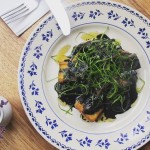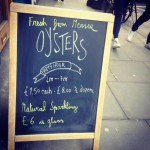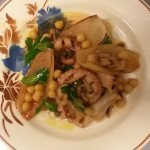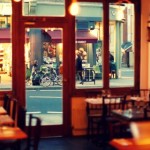This is a review dedicated to extolling the virtues of simplicity. If I sound like a broken record, it’s because so many restaurants are over-complicating good ingredients. Take fish as a prime example: if you get the best and freshest raw materials, adding too many ingredients and flavours (a) takes attention from and masks the quality of the main event, (b) confuses the tastebuds where good cooking allows each flavour to flourish individually and collectively, and (c) is historically a way to disguise bad ingredients.
Fish at its freshest needs almost nothing, maybe a light seasoning, a sympathetic herb, maybe a twist of citrus – which is why all the best seafood restaurants serve it grilled, poached or meunière. Neither does it need to be a expensive – strange as it sounds, good fish cooked in batter works brilliantly if you have really superb fresh products (ie. poached inside the batter.) This is why I love the “take three ingredients” movement. Do it well and you have a harmony of flavours and without spurious notes detracting from the overall effect.
And nowhere is the principle of simplicity better understood than in the relatively new Rubedo. You could be excused for thinking this establishment on Stoke Newington Church Street to be a wine bar without food. Decorated simply with bottles and posters dedicated to viticulture and the terroir of the wine-growing areas of France and Italy. The focus is definitely on quality or organic wines – as owner Federico Carafoli puts it in another interview:
“We created Rubedo to share our passion for natural wines and quality food. Our goal is to promote the hard work and the talent of a (growing) bunch of people who treat nature and its products with the utmost respect… (The wines) “have never seen any mechanical nor chemical treatment, be it in the vineyard or in the cellar. They are the direct expression of the soil, the vine, the climate, the tradition and the hard work and talent of the winemaker.”
Luckily, the same philosophy extends to their food:
“Our goal is to go as far as we can in sourcing unadulterated naturally grown ingredients. The style of our cooking is European bistro food and the menu is dictated by season, freshness and quality.”
And luckily too, chefs Pascal and Harry are switched on to the virtues of serving their ingredients such that they can shine without being over-adorned. Menus change daily, all the better to pick up and cook the best seasonal ingredients to hit the market that day. The menus are also kept mercifully short (one meat, one fish, one veggie main – who needs more choice than that?), and all are damn good if you have an open mind and are prepared to take a magic carpet ride to wherever the ingredients lead you. Faddiness should be put to one side, though possibly a good idea to mention to your waiter if you have any allergies.
We began with water (free and brought to the table unasked) and a selection from a wine menu that is constructed from love. These are well-chosen bottles, mostly but not exclusively French and Italian and evidently the result of a lasting relationship with small producers, the sort whose products you will not find on the shelves of supermarkets.
Given our meaty mains, I selected a bottle of La Stoppa Trebbiolo 2013 from Piacenza in the Emelia-Romana region of Italy, made from indigenous grape varieties (60% Barbera and 40% Bonarda.) Bearing in mind the wine menu promises that “they will surprise, intrigue and often exhilarate you with their energy” I was expecting much – and was not disappointed. Not unlike a light to medium Beaujolais, the wine burst on to the tongue with succulent berry flavours backed by earthier tones that reminded me of the smell of old timbers. This was a revelation, certainly one that would attract me back to Rubedo, quite apart from the food. Mr Carafoli was close by and evidently approved of our choice.
Ah yes, the menu, which we perused while munching on a range of artisan breads and cultured butter (“quite right too,” said my companion, “we don’t want uncultured Sun-reading butter!”) As a near-neighbour of Mersea Island, I was tempted by the rock oysters, though will be visiting The Company Shed to sample those in the next week or two. All the starters looked tempting, a Franco-Italian coup but for the Kipper paté. Great to see boudin noir (French black pudding) and ox tongue making respective rare appearances, the latter perfectly paired with a classic sauce gribiche.
Guess what – everything we ordered came in threes. Her starter comprised courgettes (green and yellow), fennel and Berkswell cheese, while mine combined winter tomatoes (being good old-fashioned knobbly beefsteak tomatoes of the kind housewives love to cook with on the continent), Westcombe ricotta and monk’s beard. Monk’s beard? I hear you ask. Yes, I thought it was a fungus. Not so:
Monk’s Beard is a relatively unknown green. Thought to have originated from the Cappuccino Monks in Tuscany this vegetable has become popular with chefs cooking seasonal menus. Its texture is succulent and moist and its flavour is similar to chard with a slightly bitter aftertaste.
How brilliant to find just such a seasonal menu serving it too. It reminded me rather of samphire, but worked beautifully with the fresh ricotta and tomatoes, each enhanced by a slightly sweetened dressing, redolent of fine and noble Italian extra virgin olive oil.
A very promising start, each dish making wonderfully harmonious noises from its three ingredients. And the main we both chose promised the same, being a plate of leg of blackface hogget, broad beans and wild garlic with cooking juices and nothing else. Great to see hogget (sheep between weaning and shearing) on the menu, for while the new season lambs are being born, those born in the last couple of seasons have been out in the fields munching grass. We really should make more of our sheep and appreciate the joy of eating animals that have acquired deeper layers of flavour and texture in the course of short but happy lives.
Tell the truth, neither of us ate so much as a mouthful for a good minute, such was the glorious aroma. In another blog I will be speculating what would happen to restaurants if people lost senses of smell and taste, though in my opinion presentation is often over-elaborated and smell neglected. The perfectly pink hogget looked a picture, but its bouquet, redolent of wild garlic, was every bit as spine-tingling as that of the wine. It was perfectly cooked, tasted succulently divine and worked with the broad beans (in the Spanish tradition, with their outer casing) such that the whole was much greater than the sum of the parts. One simply did not need more, and “sides” would probably have distracted from the dish. “Never mind the quality, feel the width” might be the American philosophy, though I was thrilled to find the virtues of simplicity demonstrated with such eloquence.
After the crescendo of a main course we went for more simplicity: a slice of drop dead gorgeous blood orange tart (the best thin layer of shortcrust pastry with no hint of sogginess) and a plate of all three cheese (Riseley, Beenleigh Blue and Tymsboro), matched on the plate with membrillo quince paste and some hunks of delicious local sourdough, purchased, we suspected, from a fine craft baker a little further up Stoke Newington Church Street. A slight black mark from the otherwise charming service when the waiter forgot to bring the extra spoon requested, but otherwise they earned the 12.5% service added to the bill.
I’ve eaten at and reviewed many establishments, but seldom can I have come away from an evening feeling so contented. In this case, £104 including service and a £33 bottle of wine seemed more than fair. To date, Rubedo is my restaurant of 2016, and a better one would have to be truly spectacular. Even if a better example does turn up, Rubedo proves decisively that less can indeed be more.

